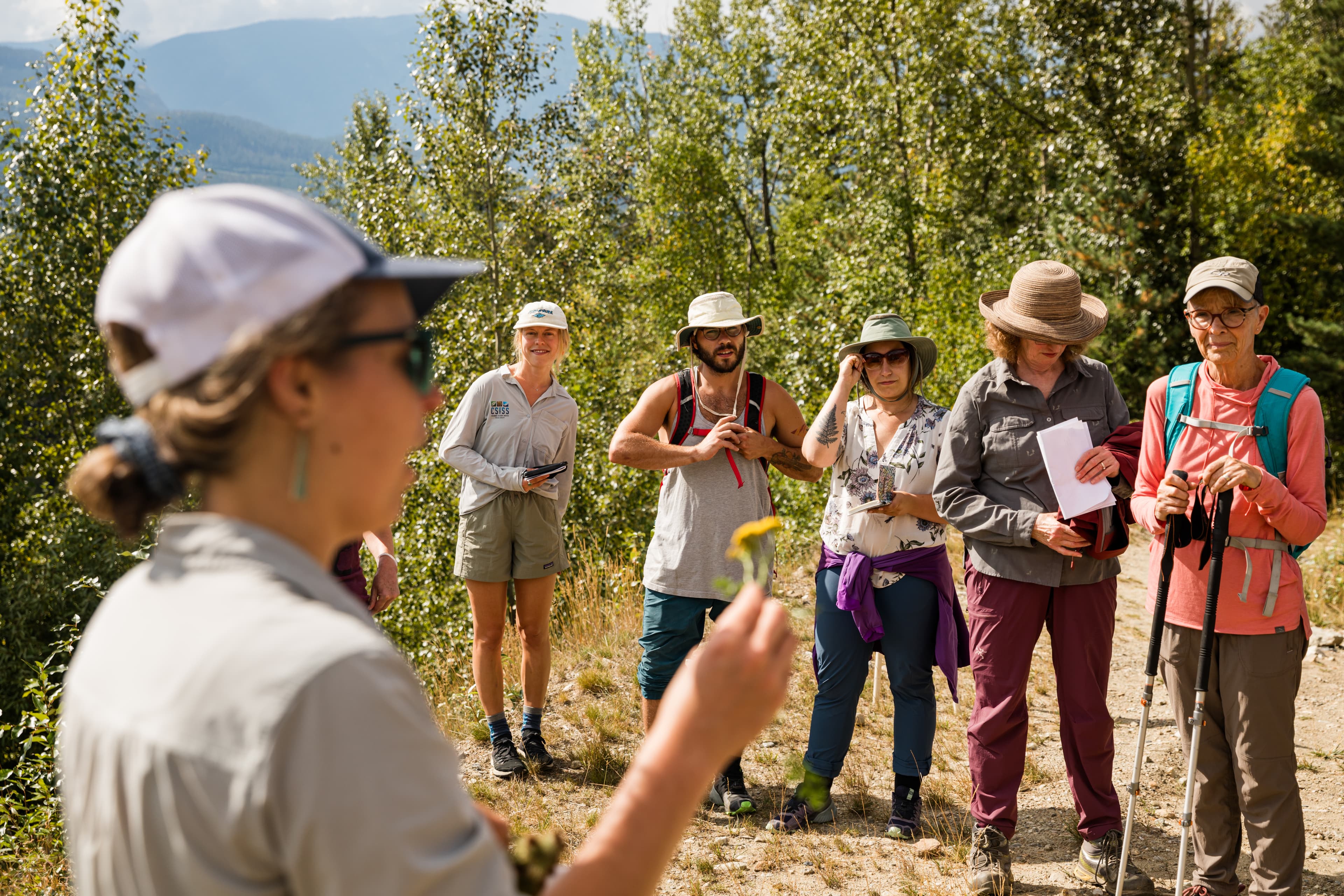Unwelcome guests: Invasive species.
Written by contributing author, Greg Hill.
Many of us moved to Revelstoke for its charm, uniqueness, and its wildness. As more people enter our outdoor spaces, we increase the risk of spreading invasive species to our local environment. A non-profit that is working hard to mitigate this problem is the Columbia Shuswap Invasive Species Society, otherwise known as CSISS.
Who is CSISS?
As a joke, I have always thought it was the Canadian Security Intelligence Service, which it obviously isn’t. But like them, our CSISS are working hard to keep out nefarious plants and animals that have infiltrated our lands. They have the serious job of establishing and operating invasive species management programs not only in Revelstoke, but across the entire Columbia Shuswap region.
To do this they have a multi-tiered approach that balances out the needs of the private landowners, land and aquatic managers, First Nations, and other stakeholders. CSISS works with each sector to achieve their main goals; to educate, engage, and inspire participation in invasive species management.

Ths Impact of Invasive Species.
There are multiple ways invasive species can spread, but the most common is way is through humans. Many of the invasive plants are here because we thought they looked great as garden plants. These plants thrive in their new environment and rapidly spread, taking over our natural plants and reducing biodiversity. Their seeds stick to our clothing and shoes spreading to new locations like a hitchhiker. Aquatic invasive plants are often used in home aquariums and then are accidentally released into the wild via plumbing or dumping tank water.
Invasive species can affect us in many different ways. The spikey puncturevine, which grows rapidly, punctures tires and feet. Giant hogweed can cause blisters and burns on skin. Knotweed is so strong that it will cover trails quickly and can even disrupt the foundations of houses. Aquatic invasive species include mussels, giant bullfrogs, and many species of fish, pet goldfish being one of them. The outcompete natural species and degrade biodiversity. Invasive aquatic plants, like milfoil, can grow so fast that they block waterways.

Contain the Spread
Aquatic Species
By following a few simple steps, we can all do our part in preserving our favourite place to play. It’s pretty simple:
Clean your watercraft at the lake you are leaving
Drain it
Let it dry
This process will ensure that whatever organism has attached itself to your watercraft will not be able to survive. This will prevent them from invading the next lake that you set sail in.
Plant species
CSISS is working hard at implementing brushes and cleaning stations at trailheads. These cleaning stations can drastically reduce the transport of seeds and plants from one ecosystem to another. It is simple, when you
play somewhere, you
clean your gear,
and go.
Play, clean, and go.
Head to the CSISS website and see all the different actions you can take to prevent the spread of invasive species and help CSISS officers to do their job. You can volunteer on weed pulls, which is something I did that felt fun and purposeful. You can donate to help their non-profit, and also keep a watch out for and report any of the invasive species on their list. More importantly you can clean, drain, and dry your watercrafts as well as play, clean, and go when you are out adventuring on solid ground.
